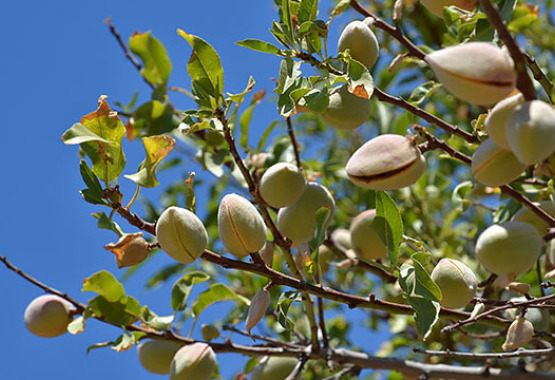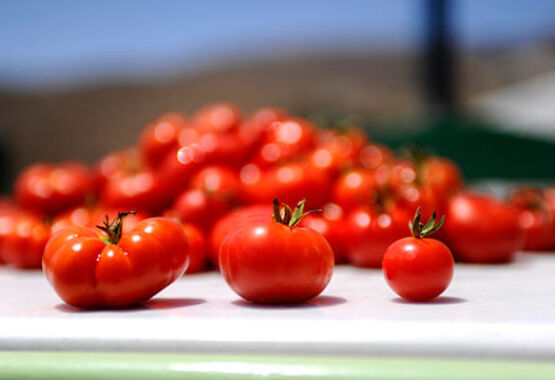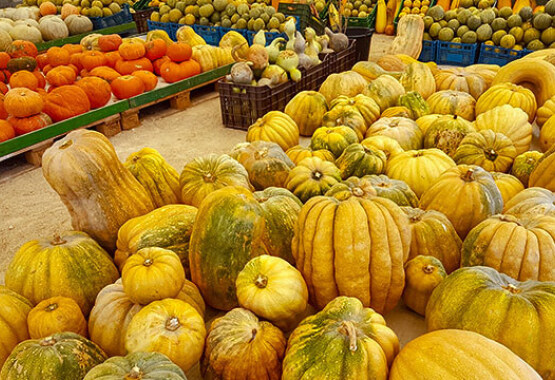
AROUND GREECE
Various references are found for sun-dried products and mainly for sun-dried wines as well as their countless production methods. Homer notes that Odysseus admired the King’s vineyard on Corfu Island, where there were designated areas for sun-dried grapes and grape-stomping. Hesiod (Greek poet from 8th century BC) gives detailed information about the grape-stomping technique in Viotia area while others note the sun-dried wine of Siatista.
Delicious snacks, good to savour any time of day, such as figs, grapes and tomatoes are the main dried products produced on most Greek Islands as well as in some areas of mainland Greece. Sun-dried figs and the renowned Corinthian sultanas are Greece’s most important exporting products, especially to European countries. In the past the rooftops of island houses, which burned under the hot sun, were covered with large wooden boards placed under sheets shielding various fruits and vegetables let to dry out and then stored in cloth bags. During winter the inhabitants submerged their dried goods in water to recover their humidity and cooked them in various ways.
Today, dried tomatoes are sold in markets, either neatly passed through a string or in jars preserved in olive oil or even in a paste texture. During the past few years, sundried tomatoes have become a trend, and are commonly used in recipes, for both their taste as well as for their high content of lycopene, antioxidants and vitamin C. You will find a wide variety of colours, sizes and flavours while traditionally they are served with olive oil, rosemary, basil and garlic.
As in raisins, figs are among the healthiest snack choice offered by Greek nature. Besides being high in fiber, they contain potassium, magnesium, iron and calcium, along with their caramel flavour, they are simply irresistible. Besides using figs as snacks, you can enjoy them in salads or use them as an ingredient in various dishes.
After the harvest, the grapes are spread in drying barns, under the strong, summer sun. In this way all the nutrients are concentrated in the grape, fermented in the sunlight. The delectable taste of this food is only rivalled by its nutritional value.
Greek sweet wines can be the perfect drink on any occasion and could easily turn into a cherished experience. All you wine lovers will no doubt find among the top quality Greek dessert wines the one that is perfect to your palate. And for all of you who look for the right combinations of wine and food, —whether the latter means an exotic dish or a complex last course, Greek dessert wines will broaden your taste horizons and win a special place in your heart!
Sun-dried products of Greece
Kissed by the sun
The tradition of sun-dried fruits and vegetables under the Greek hot sun has been passed down from generation to generation, from antiquity to the present day. The need of preserving summer fruits and vegetables during winter brought on the habit of drying them individually in order to preserve their summer aromas. Some dried-foods that are considered gourmet in our days, were once produced for conservation purposes and consumed.Various references are found for sun-dried products and mainly for sun-dried wines as well as their countless production methods. Homer notes that Odysseus admired the King’s vineyard on Corfu Island, where there were designated areas for sun-dried grapes and grape-stomping. Hesiod (Greek poet from 8th century BC) gives detailed information about the grape-stomping technique in Viotia area while others note the sun-dried wine of Siatista.
Delicious snacks, good to savour any time of day, such as figs, grapes and tomatoes are the main dried products produced on most Greek Islands as well as in some areas of mainland Greece. Sun-dried figs and the renowned Corinthian sultanas are Greece’s most important exporting products, especially to European countries. In the past the rooftops of island houses, which burned under the hot sun, were covered with large wooden boards placed under sheets shielding various fruits and vegetables let to dry out and then stored in cloth bags. During winter the inhabitants submerged their dried goods in water to recover their humidity and cooked them in various ways.
Sun-dried tomatoes
The practice of drying tomatoes in the sun on hot summer days is particularly prevalent in some areas of Greece such as Chios and Santorini. In older days people had no other way to preserve tomatoes other than by drying them in the sun. The dried tomatoes were passed through a thread and hung away in storage rooms. When it was time to use the dried products they soaked them in hot water.Today, dried tomatoes are sold in markets, either neatly passed through a string or in jars preserved in olive oil or even in a paste texture. During the past few years, sundried tomatoes have become a trend, and are commonly used in recipes, for both their taste as well as for their high content of lycopene, antioxidants and vitamin C. You will find a wide variety of colours, sizes and flavours while traditionally they are served with olive oil, rosemary, basil and garlic.
Sun-dried figs
Dried figs are commonly used in the Greek diet dating back to ancient Greece. Today the country produces about 5,500 tons of dried figs. The fig orchards occupy an area of approximately 21 km2 covering Greece while Messinia, Laconia, Arcadia and Evia (Kimi) are the main producing areas. An important part of the production is sold out in various EU countries as well as in other ones such as the USA, Canada and Australia. The fresh figs harvest process begins in August. Fresh figs are harvested in August, either by hand directly from the tree or from the nets placed under the fig trees. Next step is done by the fig producer who screens the figs, lays them out to dry in the sun and the opens them and attaches them into pairs.As in raisins, figs are among the healthiest snack choice offered by Greek nature. Besides being high in fiber, they contain potassium, magnesium, iron and calcium, along with their caramel flavour, they are simply irresistible. Besides using figs as snacks, you can enjoy them in salads or use them as an ingredient in various dishes.
Sultanas
Corinthian sultanas and currants are products of the Greek land that date back to antiquity. The science of nutrition nowadays recognises its beneficial properties. Corinth, and the entire Peloponnese, is considered the birthplace of this unique, sweet product, which is used in traditional cooking and baking. The Zante currant produced in Zakynthos also has Protected Designation of Origin (PDO) status.After the harvest, the grapes are spread in drying barns, under the strong, summer sun. In this way all the nutrients are concentrated in the grape, fermented in the sunlight. The delectable taste of this food is only rivalled by its nutritional value.
Sweet wines
Sun-dried sweet wines originated from every part of Greece. Taste the worldwide famous Santorinian Vinsanto, made by blending together the varieties of Assyrtiko and Aidani. The famous Vinsanto, a luscious sweet wine, is made from sun-dried grapes and aged by law for at least three years.Greek sweet wines can be the perfect drink on any occasion and could easily turn into a cherished experience. All you wine lovers will no doubt find among the top quality Greek dessert wines the one that is perfect to your palate. And for all of you who look for the right combinations of wine and food, —whether the latter means an exotic dish or a complex last course, Greek dessert wines will broaden your taste horizons and win a special place in your heart!




